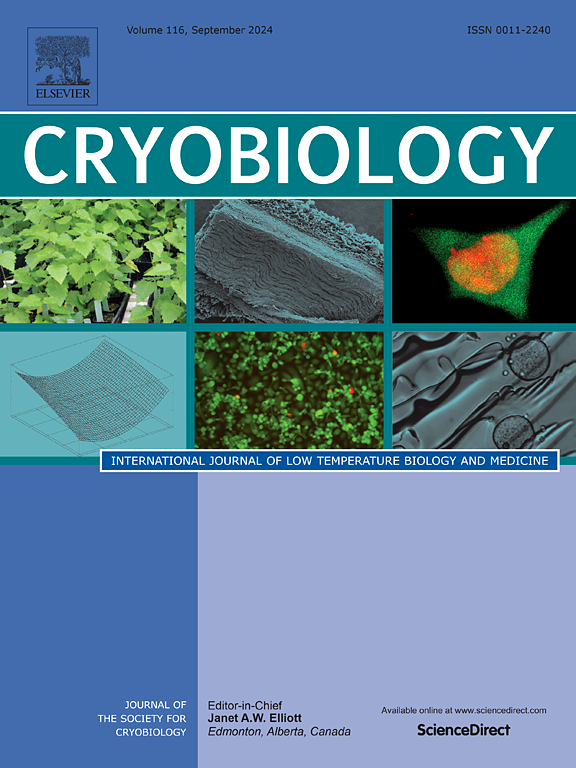不同解冻方式玻璃化孵化囊胚恢复率及起泡频率的比较
IF 2.1
3区 生物学
Q2 BIOLOGY
引用次数: 0
摘要
本研究评估了不同加热方案对玻璃化孵化囊胚恢复率和起泡频率的影响,旨在优化胚胎加热方法以提高临床效果。共纳入650例患者(857个周期),使用常规的多步稀释法或直接浸泡在低浓度蔗糖溶液中的快速加热方法加热囊胚。比较恢复率、起泡次数、着床率和临床妊娠率,以及与冷冻时胚胎形态的关系。虽然两种方法的回收率相似(常规方法:123.67%,快速方法:124.45%),但快速方法显著降低了起泡频率(5.1% vs. 10.9%, P <;0.05)。两组的着床率和临床妊娠率相似。然而,快速加热方法有效地减少起泡,同时保持恢复速度。这些发现表明,快速变暖可能通过降低渗透压力来改善胚胎稳定性,支持其潜在的临床益处,并需要对活产率等长期结果进行进一步研究。本文章由计算机程序翻译,如有差异,请以英文原文为准。
Comparison of the recovery rate of vitrified hatched blastocysts and the frequency of blebbing between different thawing protocols
This study evaluated the effects of different warming protocols on the recovery rate and blebbing frequency of vitrified hatched blastocysts, aiming to optimize embryo warming methods for improved clinical outcomes. A total of 650 patients (857 cycles) were included, with blastocysts warmed using either the conventional multi-step dilution method or a rapid warming method involving direct immersion in a low-concentration sucrose solution. Recovery rate, blebbing frequency, implantation rate, and clinical pregnancy rate were compared, along with the relationship to embryo morphology at the time of freezing. While recovery rates were similar between the two methods (conventional: 123.67 %, rapid: 124.45 %), the rapid method significantly reduced blebbing frequency (5.1 % vs. 10.9 %, P < 0.05). Implantation and clinical pregnancy rates were similar between the two groups. However, the rapid warming method effectively reduces blebbing while maintaining recovery rates. These findings suggest that rapid warming may improve embryo stability by reducing osmotic stress, supporting its potential clinical benefit and the need for further studies on long-term outcomes such as live birth rates.
求助全文
通过发布文献求助,成功后即可免费获取论文全文。
去求助
来源期刊

Cryobiology
生物-生理学
CiteScore
5.40
自引率
7.40%
发文量
71
审稿时长
56 days
期刊介绍:
Cryobiology: International Journal of Low Temperature Biology and Medicine publishes research articles on all aspects of low temperature biology and medicine.
Research Areas include:
• Cryoprotective additives and their pharmacological actions
• Cryosurgery
• Freeze-drying
• Freezing
• Frost hardiness in plants
• Hibernation
• Hypothermia
• Medical applications of reduced temperature
• Perfusion of organs
• All pertinent methodologies
Cryobiology is the official journal of the Society for Cryobiology.
 求助内容:
求助内容: 应助结果提醒方式:
应助结果提醒方式:


